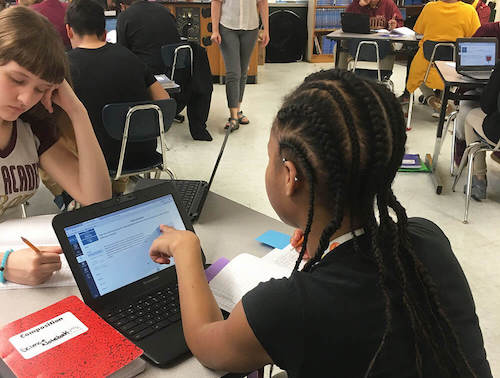
A Medical Mystery
Middle school educators across the US are expected to dive into next generation science. However, high quality NGSS-aligned materials and professional learning opportunities are scarce. That’s why BSCS’s 3-D middle school science program—A Medical Mystery—is valuable. It supports teachers in the effective instruction of an NGSS-aligned, EQuIP-reviewed body systems curriculum unit.
Students using this program are immersed in an online environment that challenges them to solve the medical mystery: “What’s Wrong with M’Kenna?” Over the course of several lessons, students investigate how and why M’Kenna is constantly sick, unable to keep her food down, and losing weight. They use scientific reasoning skills and argumentation to identify the digestive system as the problematic organ system—and then engage with a series of interactive experiences, simulations, and animations to observe and analyze the differences between M’Kenna’s digestive system and a healthy person’s digestive system.
Ultimately, students solve the mystery and explain all of M’Kenna’s symptoms based on how body systems interact. More importantly, they learn to use the inquiry-based practices of scientists and crosscutting concepts of systems and system models to construct their own understanding of complex phenomena.
This resource includes the complete middle school science curriculum unit and a teacher’s guide. The curriculum received a badge from the EQuIP review, indicating it is an example of high quality NGSS instruction.
Planning for online instruction? This document will help you quickly adapt A Medical Mystery for your new online classroom setting.
NGSS Design Badge
Awarded: Jan 4, 2022
Awarded To: A Medical Mystery
This resource was developed in partnership with OPB.

This material is based upon work supported by the National Science Foundation under Grant No. (DRL-1502571). Any opinions, findings, and conclusions or recommendations expressed in this material are those of the author(s) and do not necessarily reflect the views of the National Science Foundation.